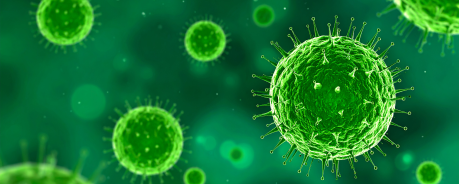Chlamydia

Chlamydia infections are among the most common sexually transmitted infections (STIs). They often remain undetected, but can be treated well with antibiotics.
Chlamydia are bacteria that mainly cause inflammation of the urethra, genital tract, and rectum, but can also occur in the mouth and throat. The infection usually progresses without or only a few symptoms.
Transmission
Chlamydia can be found in the mucous membranes of the throat, urethra, vagina, and rectum, as well as in the vaginal fluid and sperm. In lower concentrations they can also be found in urine and in the man's "precum".
An infection is possible during all sexual practices involving direct contact with the infectious mucous membranes or body fluids (urine, sperm). The most common path of transmission is unprotected vaginal and anal intercourse. But chlamydia can also sometimes be transmitted via the hands or sex toys.
How can I protect myself?
Condoms cannot really prevent an infection with chlamydia, but they do reduce the risk considerably.
In order to detect an infection early and avoid passing it on, people with often changing sex partners should get tested regularly for chlamydia - don't forget the anal swab!
Diagnosis and treatment
Chlamydia often causes no symptoms at all. If symptoms do occur, usually after one to three weeks there could be discharge from the urethra, possibly in combination with itching and burning, and pain when urinating. Pain in the testicles or lower abdomen and fever are possible signs of spreading chlamydia, which can lead to inflammation of the spermatic duct, prostate, and epididymis.
Due to the inflamed mucous membranes, the risk of an HIV infection or transmission is increased.
The "gold standard" for diagnosis is the nucleic acid detection of genetic material from the smear or the first-pass urine; there are other possible methods but they are more error-prone.
Still antibiotics quickly kill the bacteria. The earlier you start the treatment , the easier and shorter it usually is.
Because of the high risk of infection, sex should be avoided until the therapy has successfully finished. Sex partners should get tested and, if necessary, be treated as well, so that no "ping-pong" effect occurs.
Share on
